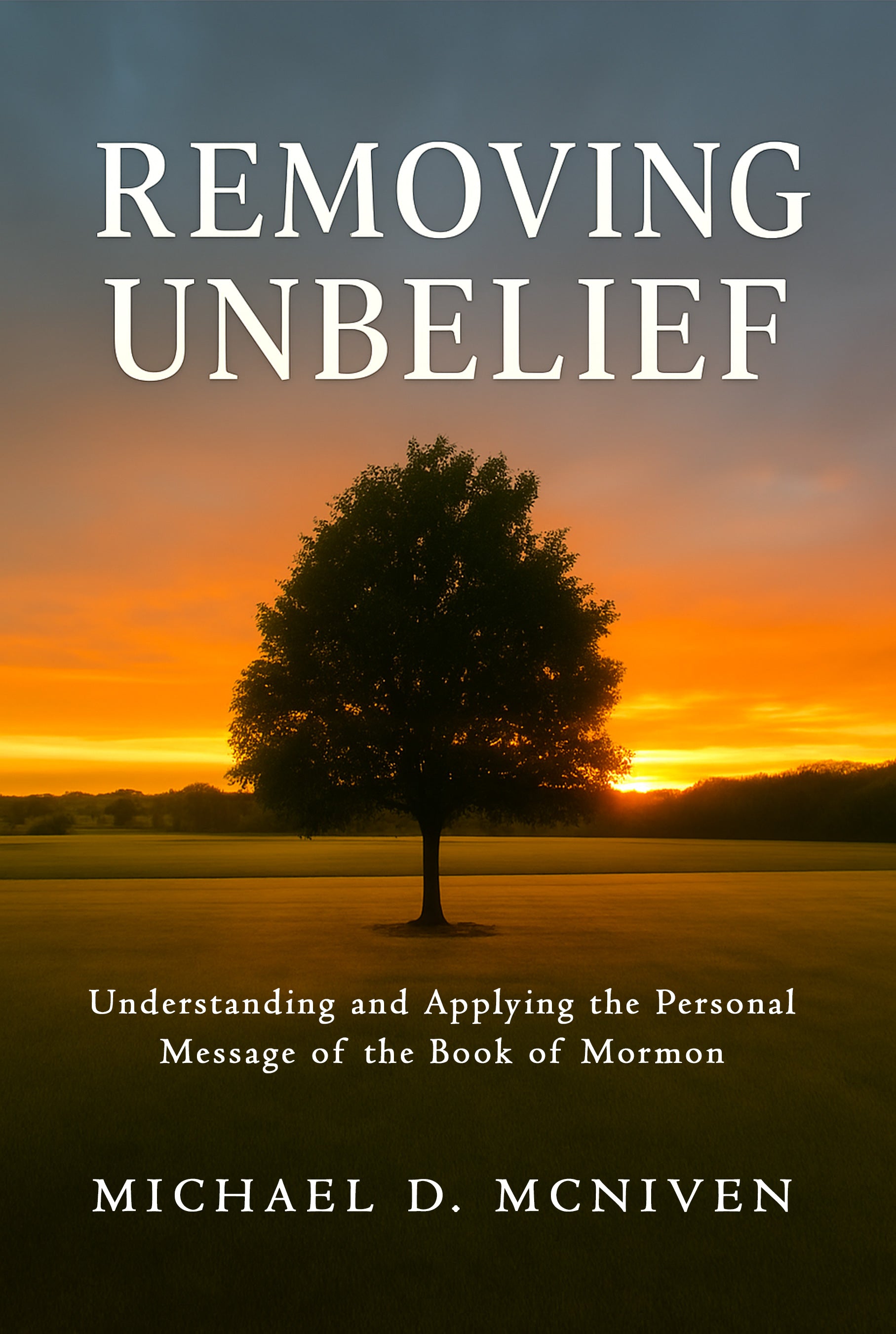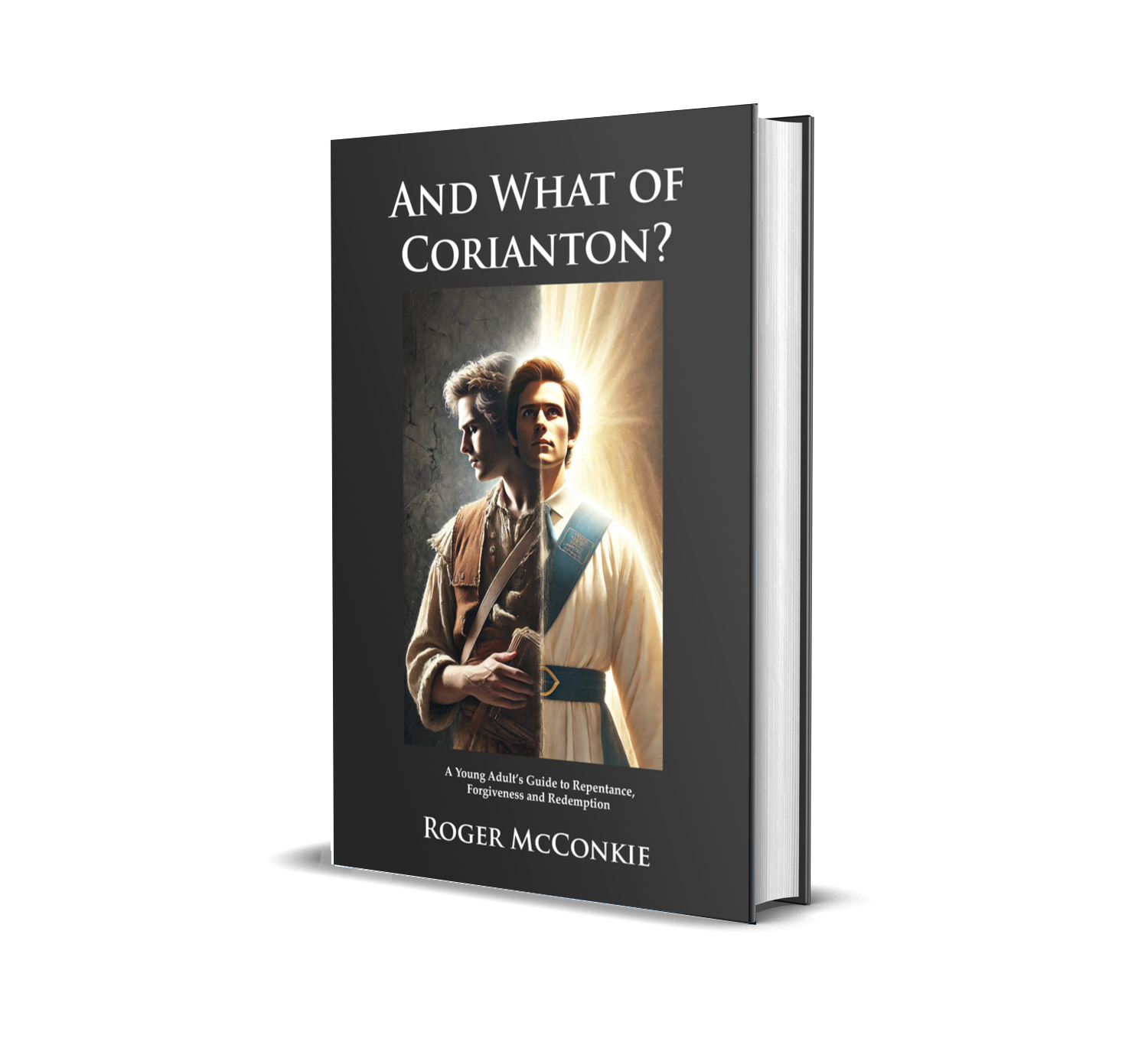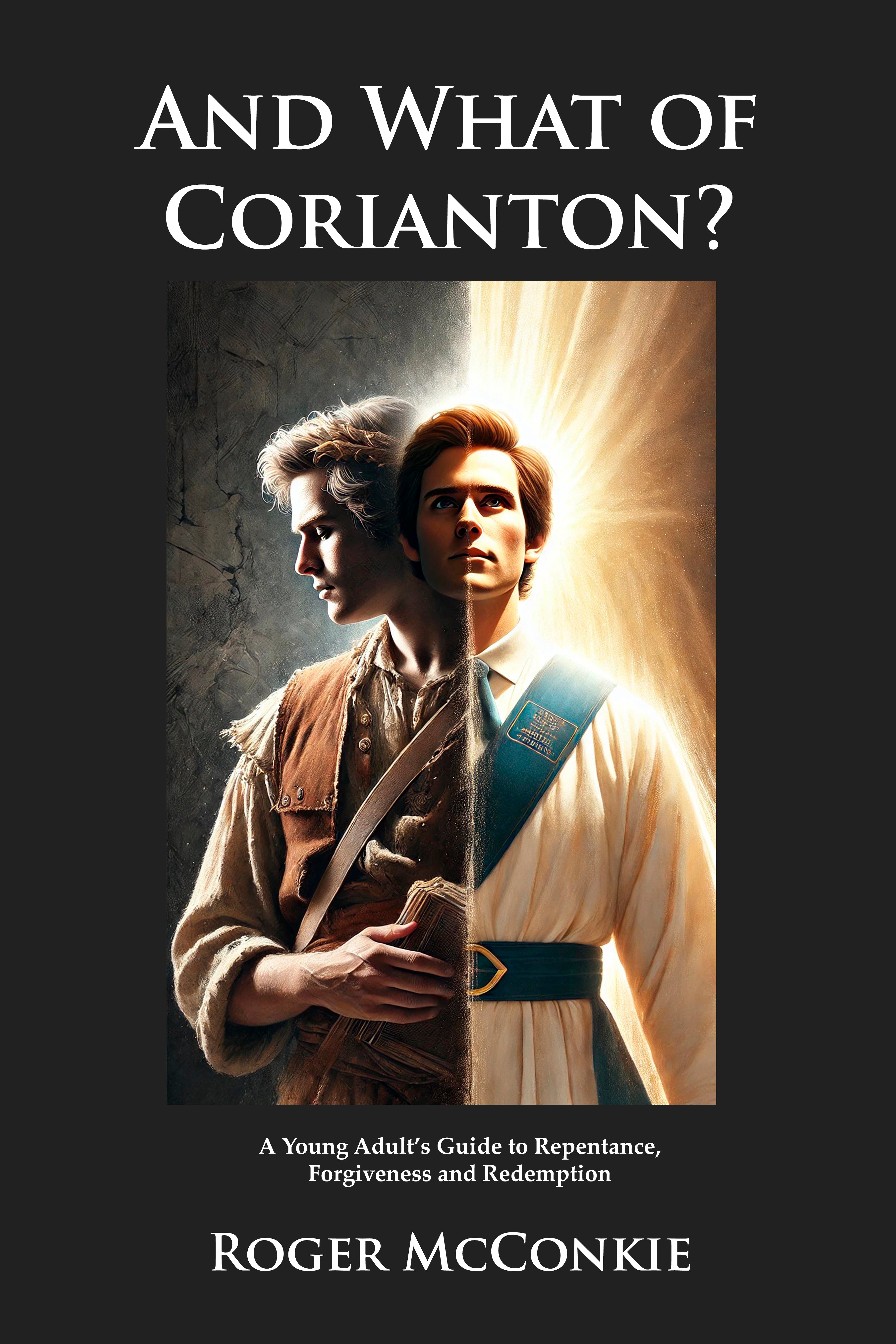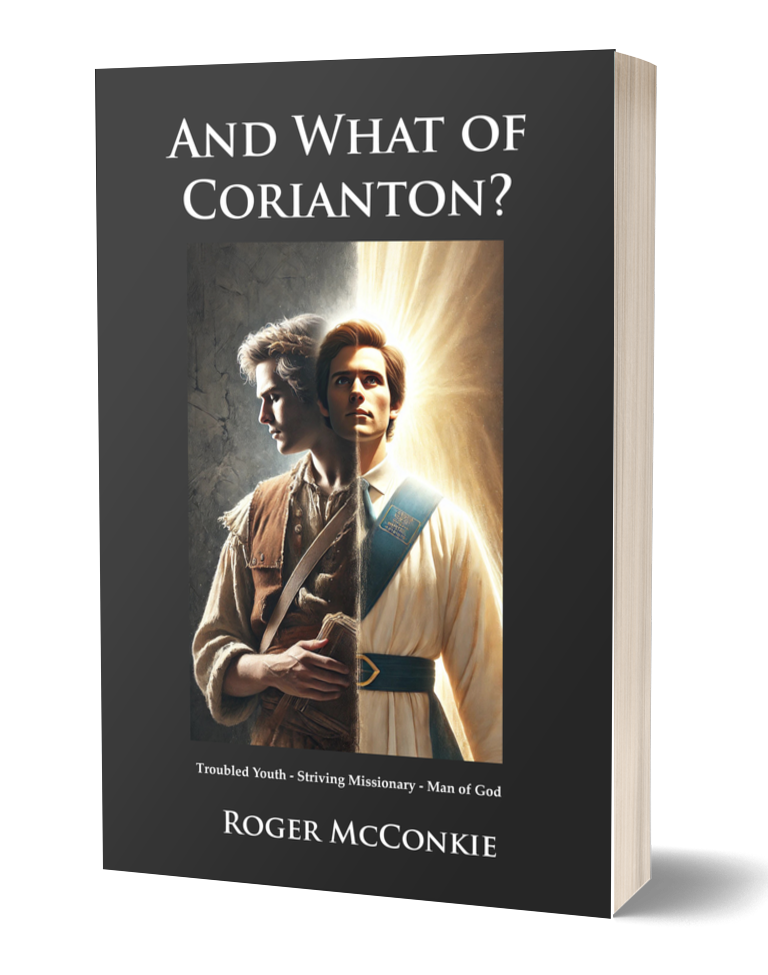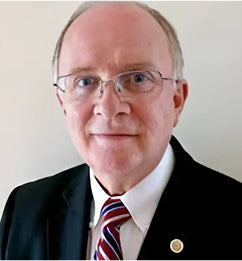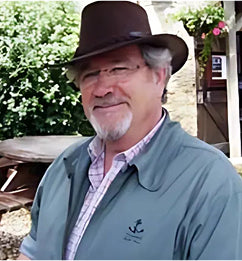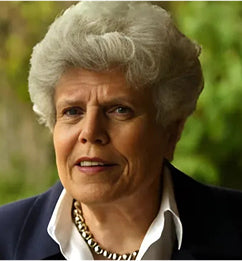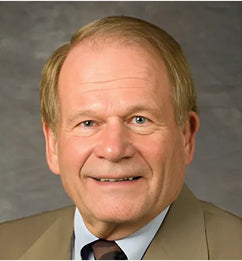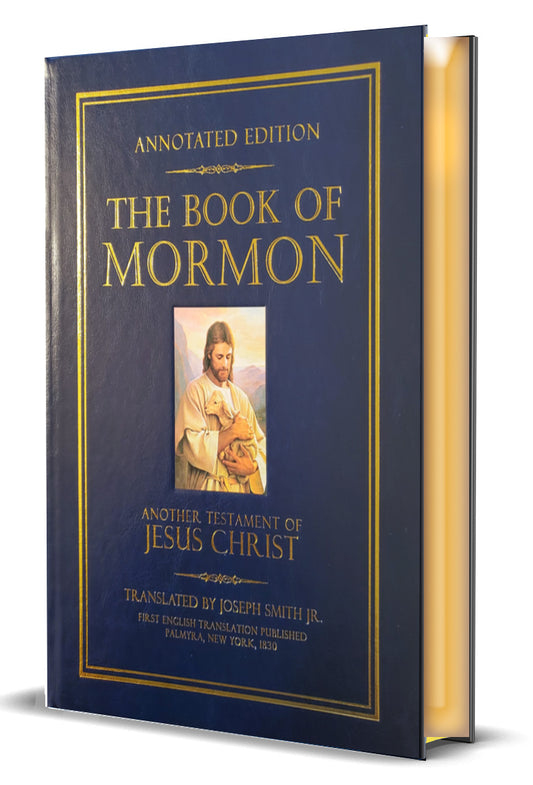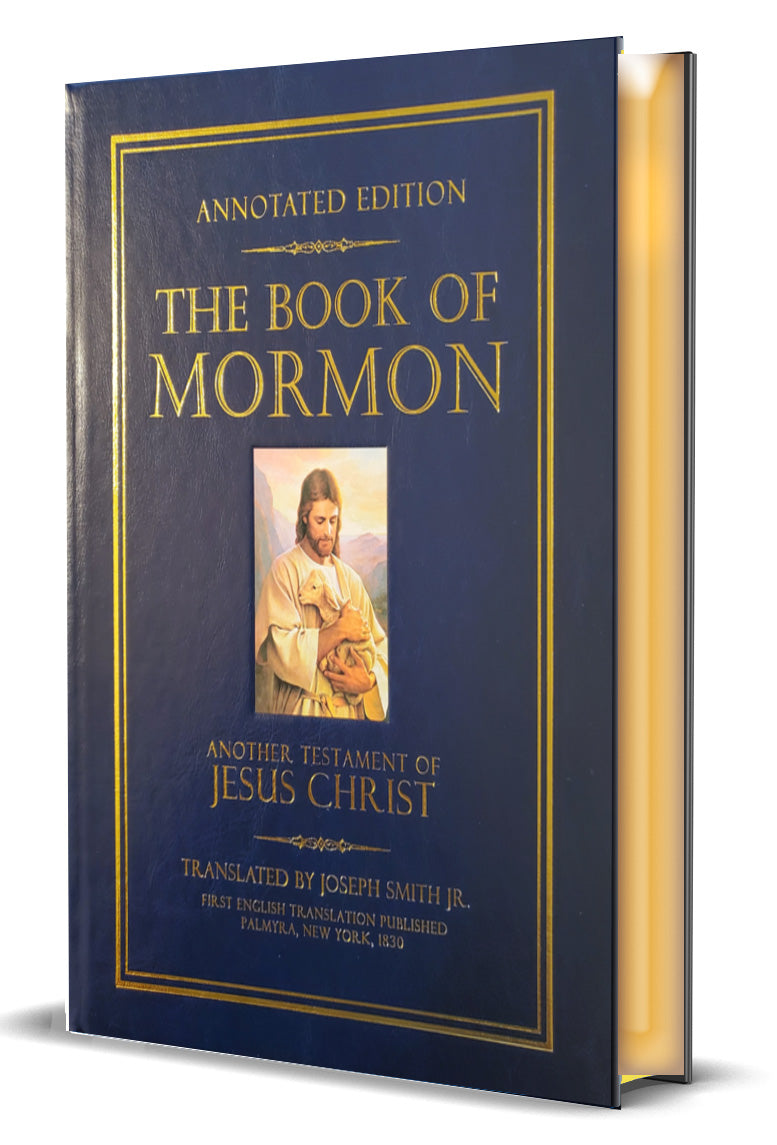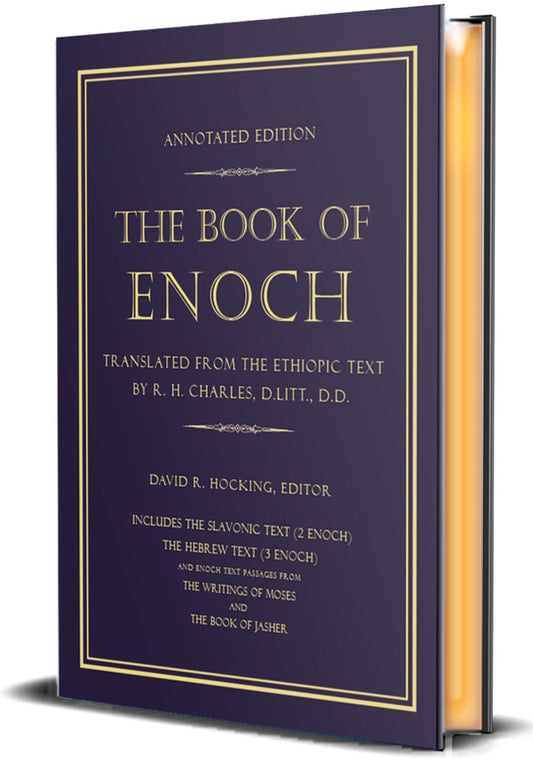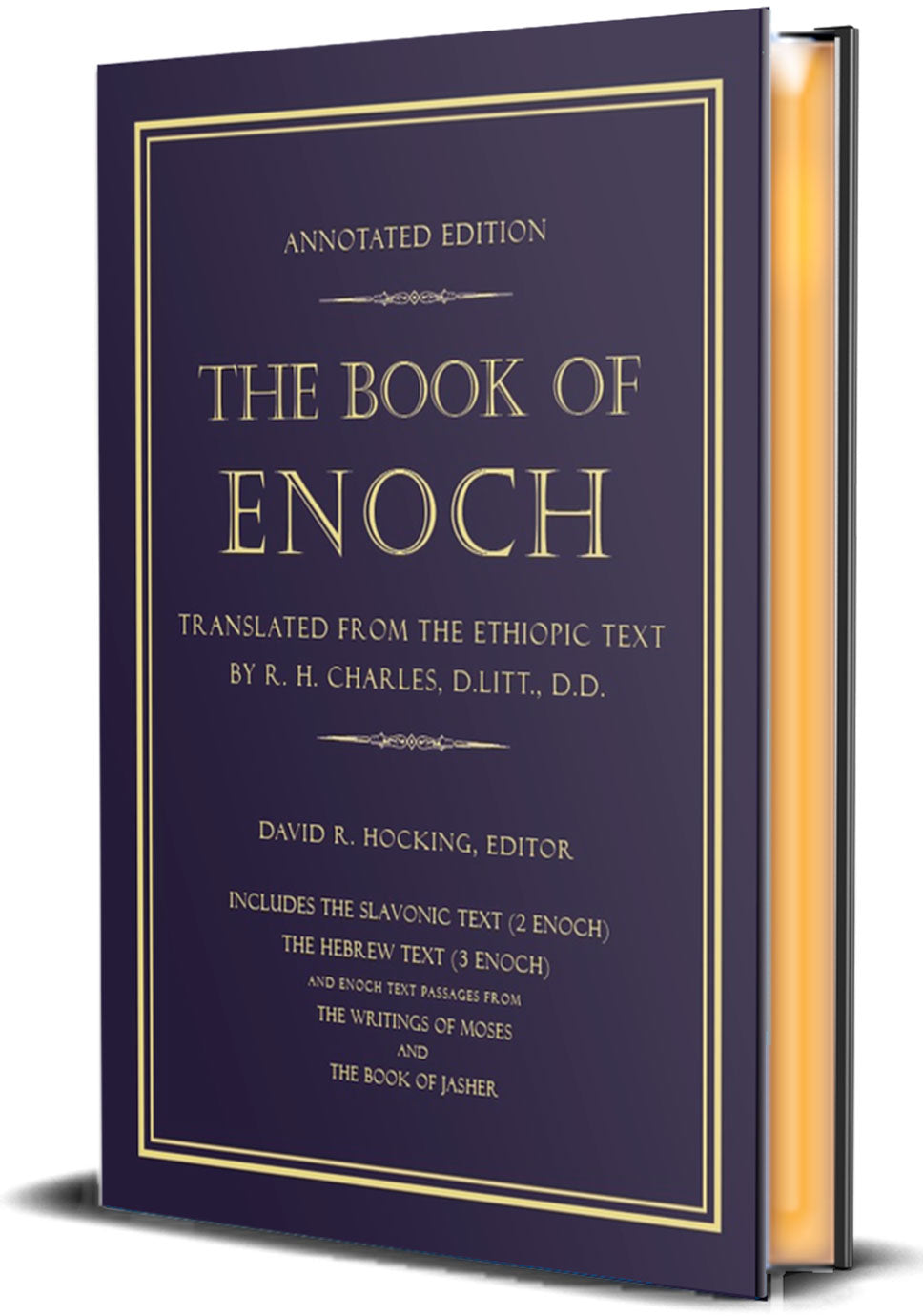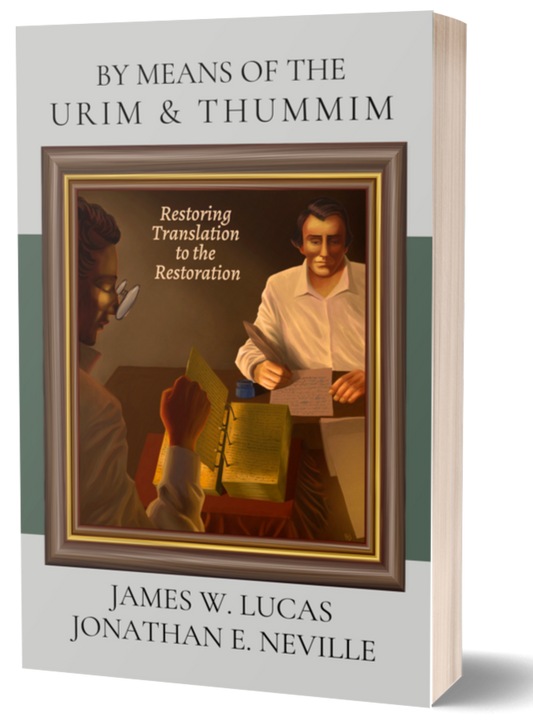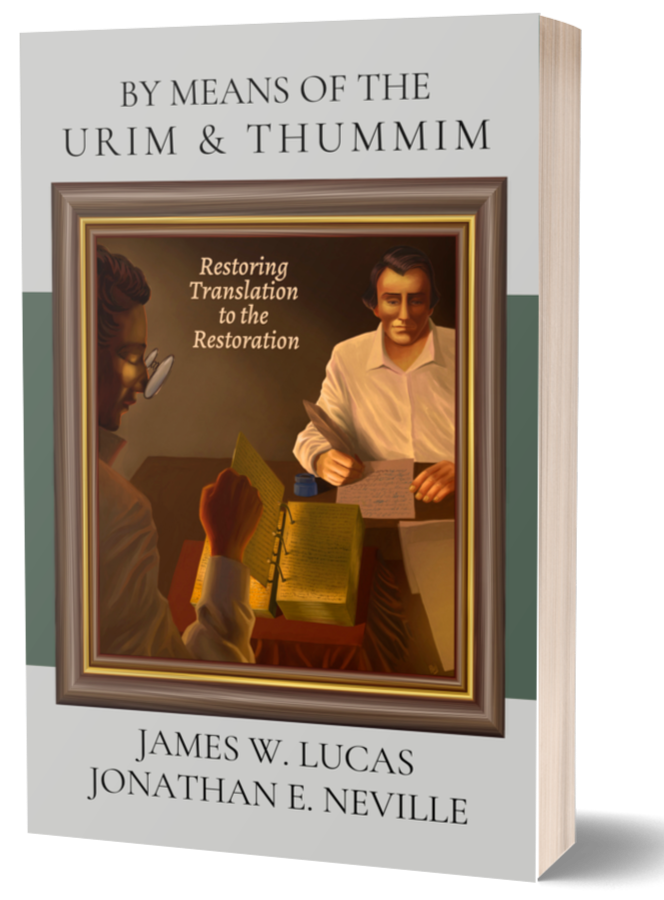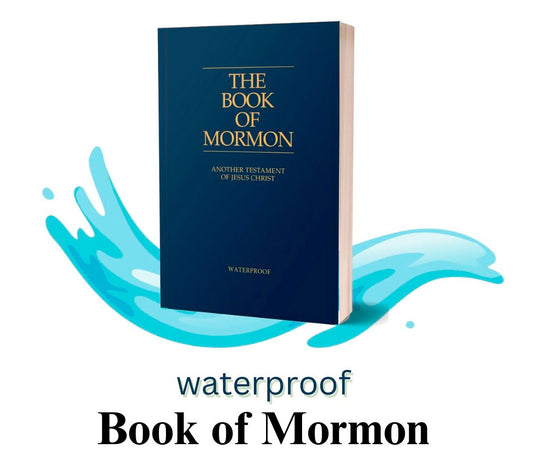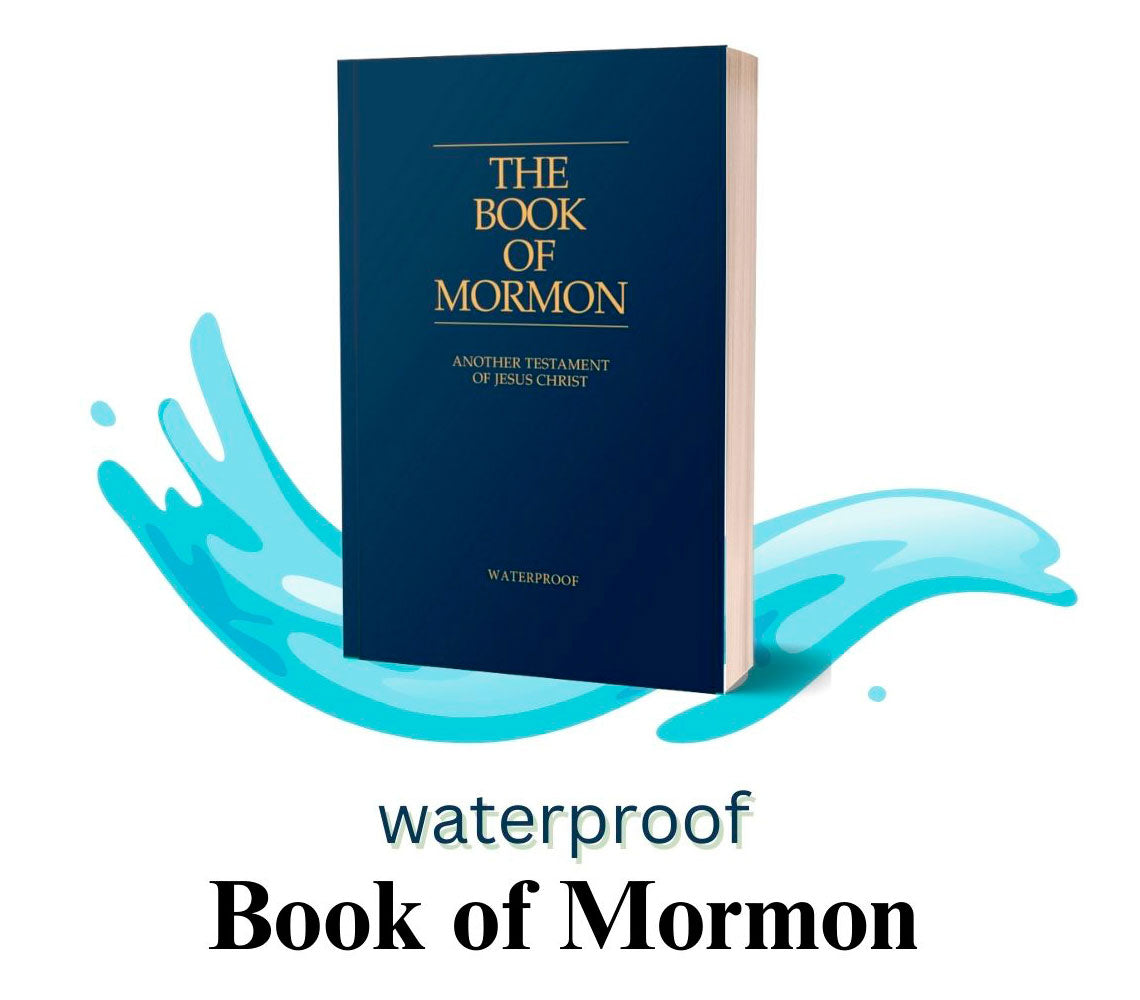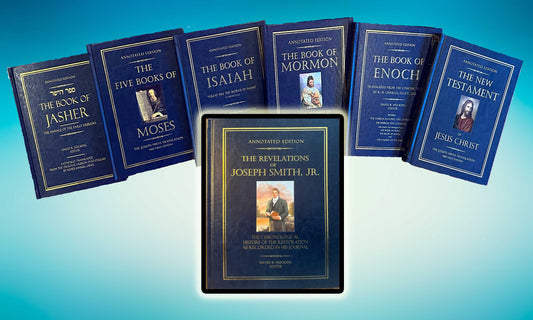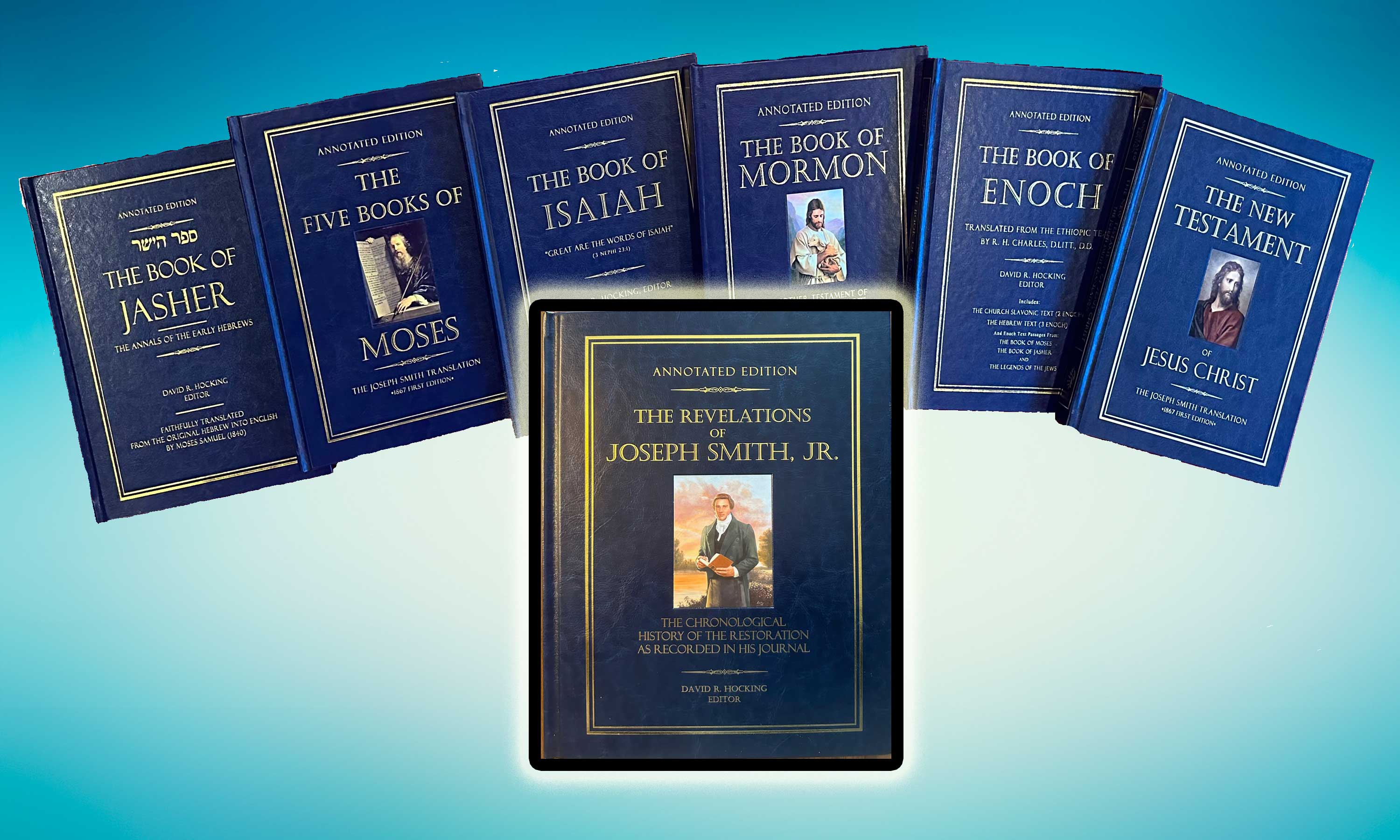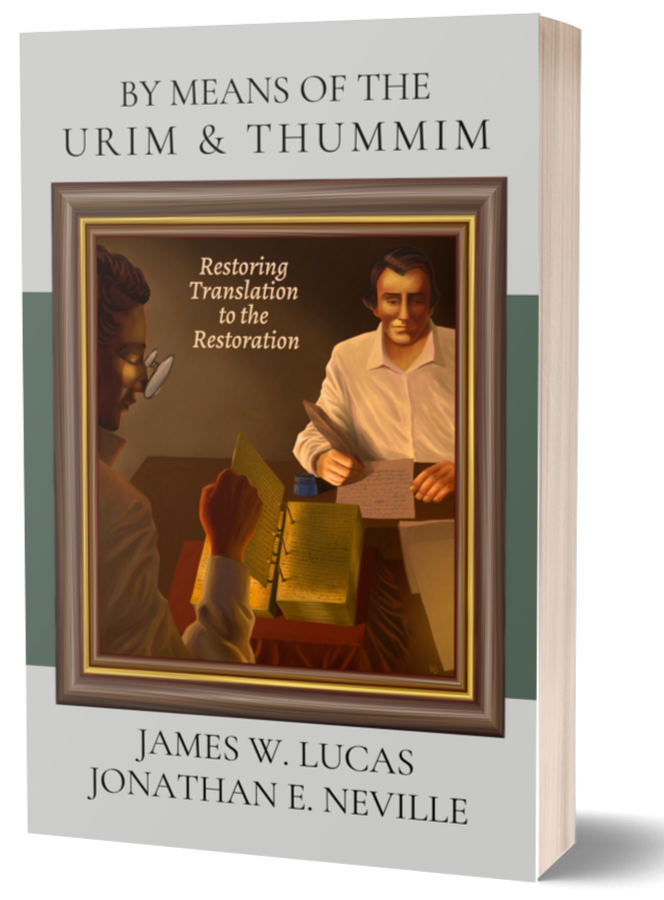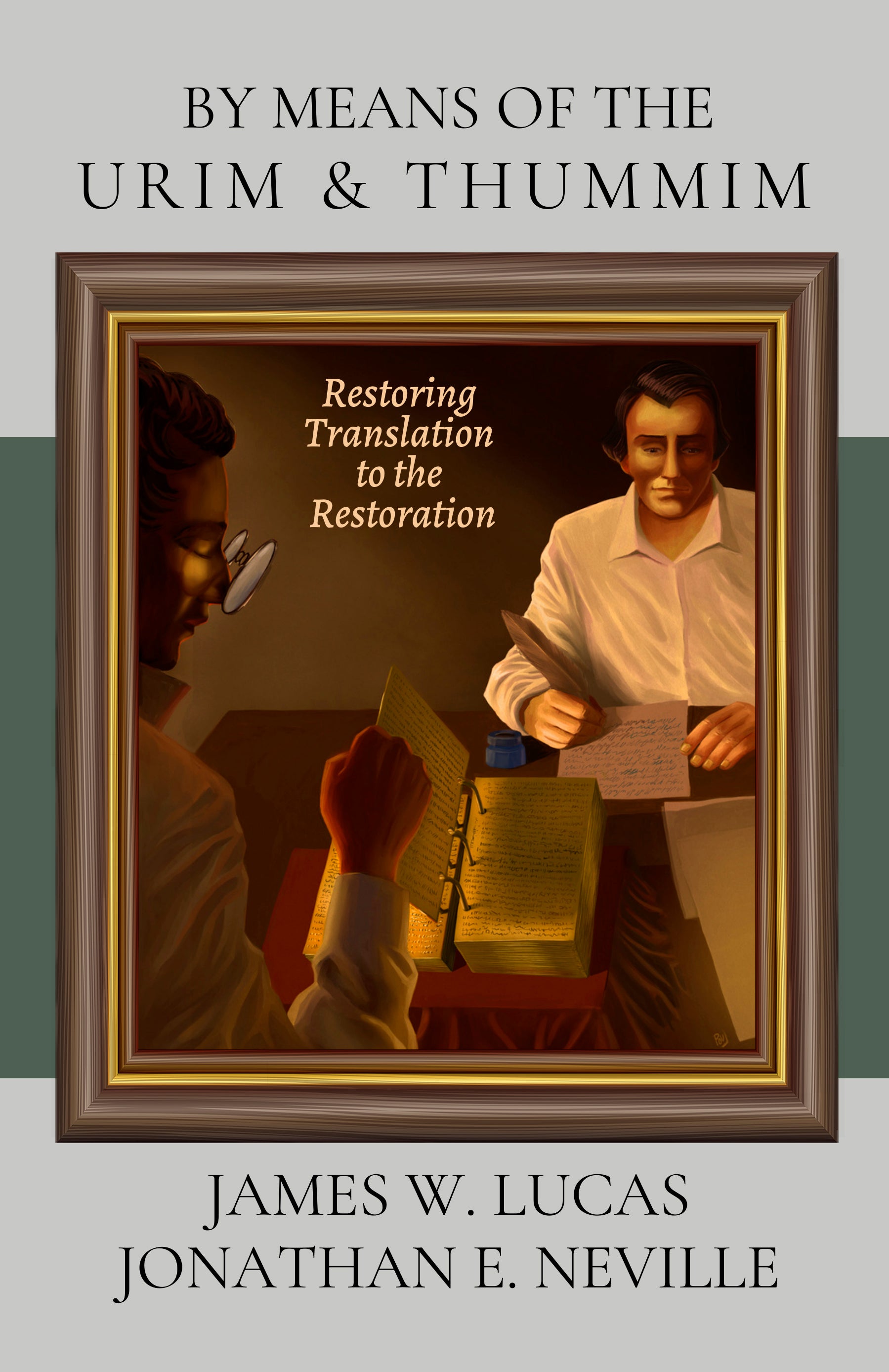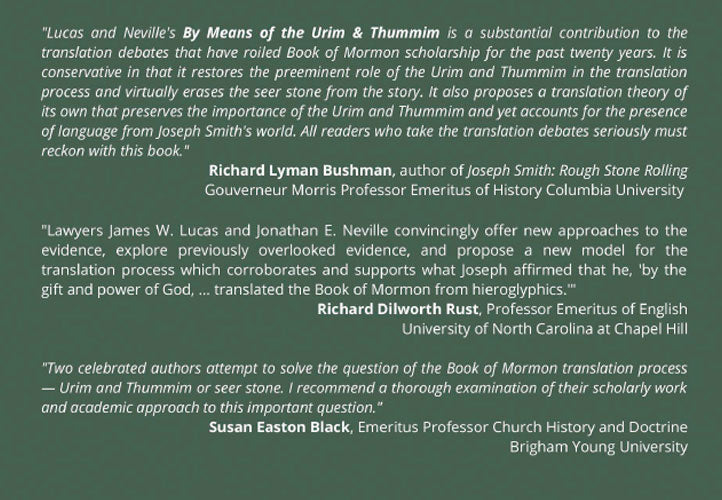James W. Lucas | Jonathan Neville
By Means of the Urim & Thummim
Restoring Translation to the Restoration
Couldn't load pickup availability
Share
About the book
DID JOSEPH SMITH TRANSLATE THE BOOK OF MORMON OR NOT?
Was Joseph Smith an uneducated farm boy who merely read words off a stone, or was he a divinely-prepared prophet who translated ancient characters etched into thin metal plates?
Drawing on modern translation scholarship and technology, the authors propose an innovative model for the translation process which corroborates and supports what Joseph and Oliver said from the beginning; that Joseph Smith translated the text using the Nephite interpreters.
- - - Praise for the book from LDS Historians - - -
Lucas and Neville's By Means of the Urim & Thummim is a substantial contribution to the translation debates that have roiled Book of Mormon scholarship for the past twenty years. It is conservative in that it restores the preeminent role of the Urim and Thummim in the translation process and virtually erases the seer stone from the story. It also proposes a translation theory of its own that preserves the importance of the Urim and Thummim and yet accounts for the presence of language from Joseph Smith's world. All readers who take the translation debates seriously must reckon with this book.
—Richard Lyman Bushman, author of Joseph Smith: Rough Stone Rolling. Gouverneur Morris Professor Emeritus of History, Columbia University
Lawyers James W. Lucas and Jonathan E. Neville convincingly offer new approaches to the evidence, explore previously overlooked evidence, and propose a new model for the translation process which corroborates and supports what Joseph affirmed that he, "by the gift and power of God, ... translated the Book of Mormon from hieroglyphics."
—Richard Dilworth Rust, Professor Emeritus of English, University of North Carolina at Chapel Hill
Two celebrated authors attempt to solve the question of the Book of Mormon translation process—Urim and Thummim or seer stone. I recommend a thorough examination of their scholarly work and academic approach to this important question.
—Susan Easton Black, Emeritus Professor, Church History and Doctrine, Brigham Young University
.Case-Lot Special
Case-lot quantities are 6+. When you add quantity 6 or more to your cart the "case lot" discount automatically kicks in.This applies to any combination of theAnnotated Scripture Seriesproducts. So you could add one (1) of each up to 6 and get the same case-lot special.]
About the author
Our authors challenge conventional wisdom and go beyond the surface to deliver inspiring, faith-affirming, and ultimately transformative content.
Shipping
All orders are processed within 3 to 5 business days (excluding weekends and holidays) after receiving your order confirmation email. You will receive another notification when your order has shipped.
Domestic Shipping Rates and Estimates
Shipping charges for your order will be calculated and displayed at checkout.
International Shipping
We offer international shipping to countries where allowed. Shipping
charges for your order will be calculated and displayed at checkout.
Returns
We accept returns up to 30 days after delivery if the item is unused and in its original condition. Please review our refund policy for more information.
In the event that your order arrives damaged in any way, please email us as soon as possible at info@digitalegend.com with your order number and a photo of the item’s condition. We address these on a case-by-case basis but will try our best to work towards a satisfactory solution.
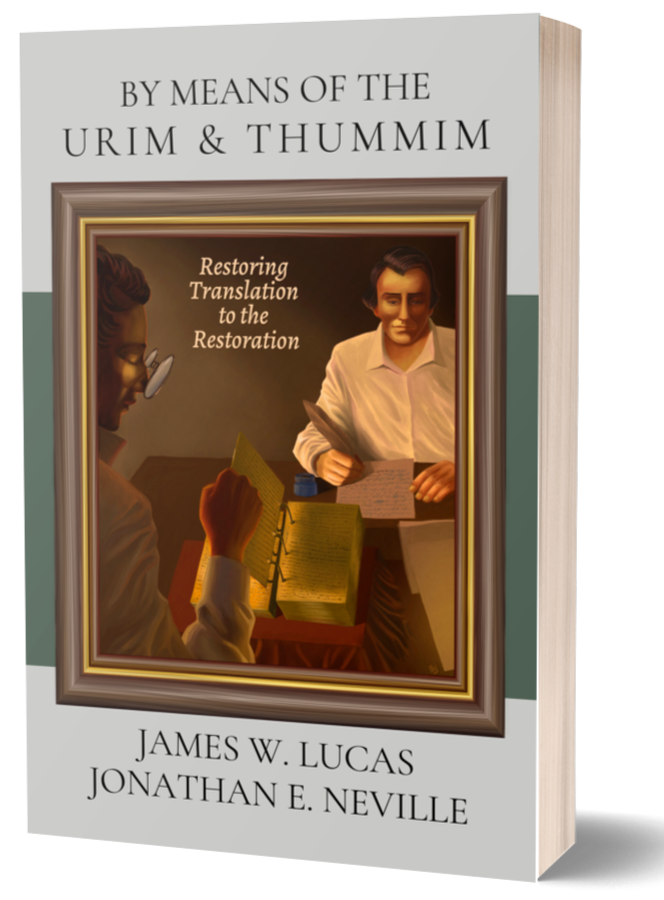
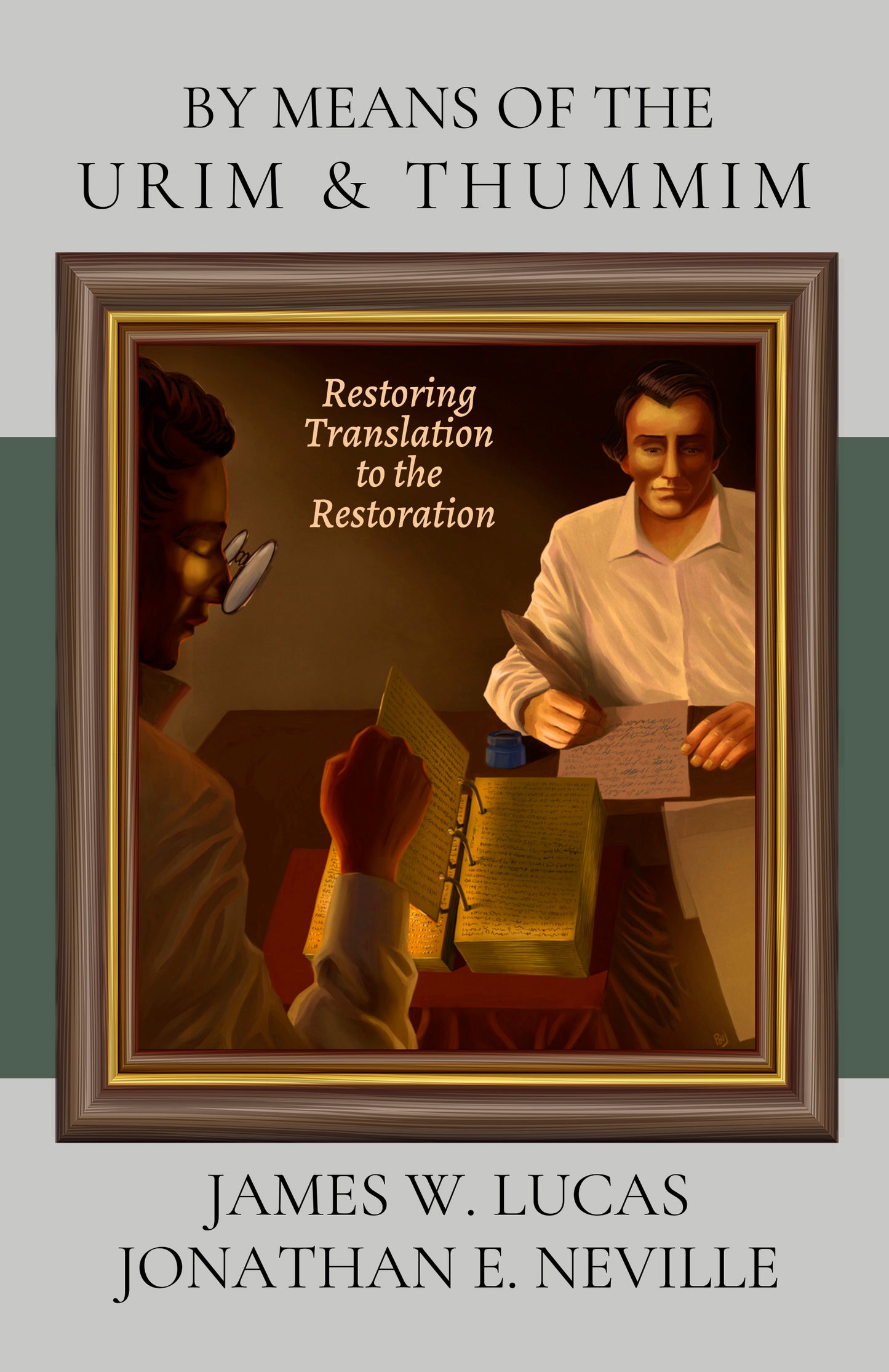
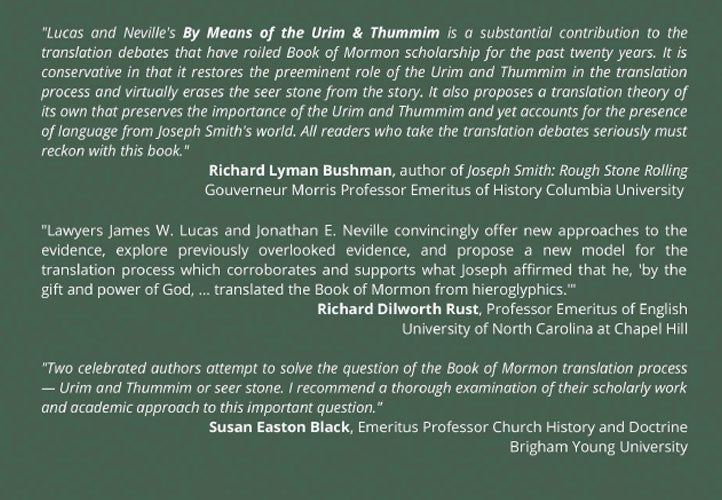
 Free shipping on orders over $99
Free shipping on orders over $99
 Up to 30% off on select titles
Up to 30% off on select titles
FAQ
How can I stay updated on new releases and special offers?
Join our newsletter to receive 15% off your next order and stay informed about exclusive offerings, new releases, author presentations, and more. Sign up Here.
How can I submit my manuscript for consideration?
We’re always on the lookout for compelling manuscripts and welcome both new and experienced authors. Find out how to get published Here.
Does Digital Legend offer self-publishing services?
No, Digital Legend is not a self-publishing company, but we would be happy to discuss your manuscript and help you explore options. Learn more about our publishing services Here.
How can I contact Digital Legend for inquiries or support?
If you have any questions or comments for us, fill out our Contact form or give us a call at +1 (801) 810-7718.

